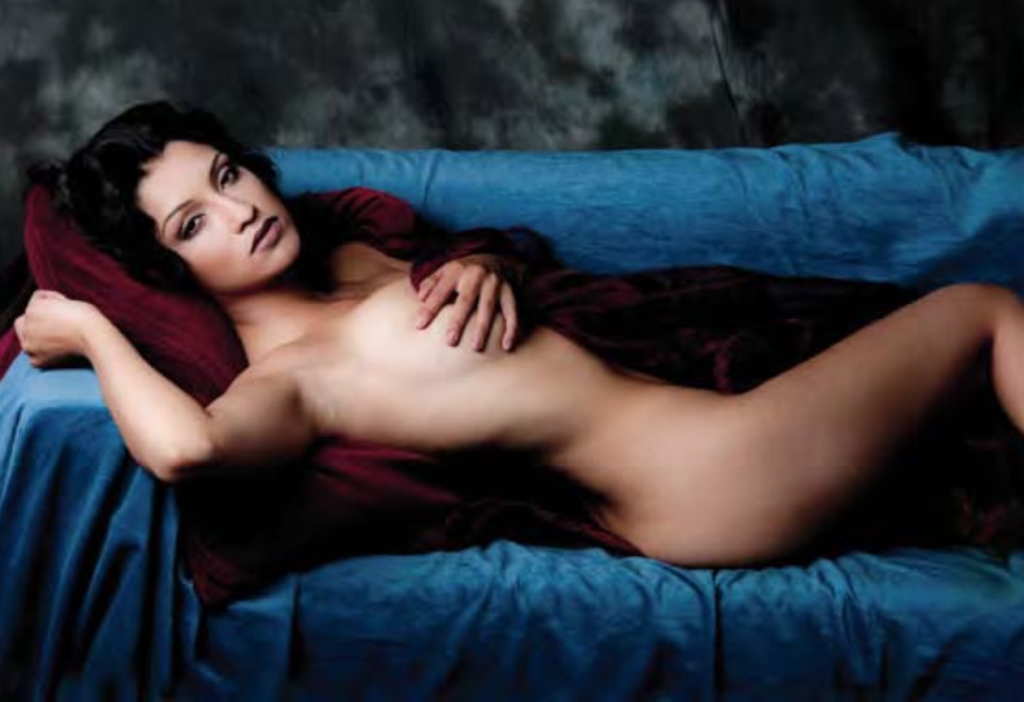“Italian, proud to be Italian, but expressly a citizen of the world”
This is the statement chosen by Gianni Russo, an artist of fine art and fashion photography as introduction to his personal website. Bewitched by Prague since the velvet revolution years, the Golden City inspired him thanks to its eternal architecture, the charm of its women and the magic fairy atmosphere you can breathe here. His passion for painting stimulates him to set up a personal photographic research linking Amedeo Modigliani’s models to a series of photo portraits dedicated to voluptuous females vaguely looking like the women depicted on canvas. The postures are languid, the fabrics are old and precious, the lighting is warm, erotic and the colours are full-bodied and as thick as a brush-stoke. Yet his women are not of this world, they in fact look like stern goddesses or fascinating Madonnas, both unreachable although they’re just before us, within easy reach. That’s the secret of Gianni Russo’s art which, starting from a raw material made up of true, really earthly girls it ideally rise up to represent the whole feminine essence.
Was it you to choose Prague or was it Prague to choose you?
Prague is like a terrific woman who enchanted me. And I chose her.
Your catalogue is a triumph of female nudes. But, besides the nude, what is the thread linking these photos?
The catalogue you are referring to regards the first exhibition of the “Modì” project which opened in Prague last year. Freely inspired to the painting works of Amedeo Modigliani, this project is strictly monographic in the subjects, in the technique implementation, in the lighting and in the atmosphere. Painting and photography are actually closely connected.
Is there no risk that these images follow the stereotype of female nude?
Well, I don’t think so. The image of female nude represents the sublime climax of art, as the classic old paintings do demonstrate. Nude can have different forms: it can be fine art but it can also sink into vulgarity. It depends on our culture and sensitiveness. Before letting a model undress in front of my lens, I try to “strip” her in her soul and thoughts in order to get to know her. I’d like people to understand this key concept.

And how is this approach carried out?
It’s a play of style, psychology and sensitivity. Being a good photographer means to be able to understand people and to be on the same wavelength on them, too. You need to establish a temporary relationship of complicity, esteem and trust.
How do you select your models?
I choose them according to my instinct and of course to the subject of the photos I intend to realise. However, to physical perfection and body measures I prefer something more intimate and indistinct, and to professional models I prefer the unskilled ones. I believe that shyness and spontaneity may give photos something special. Personally, I particularly appreciate the beauty of Slav and Czech women.
Your project on Amedeo Modigliani in Prague was very successful and very much praised by Czech public. Though, it was literally ignored by the Italian community…
More than ignored I’d dare say the Italian community failed to support it properly. However, attending the exhibition there were lots of Italian friends who supported me and helped me with the project development.
In the photos of the Modì series you might spot something of Jan Saudek. Is that just my impression? Is there any photographer that inspires you?
Saudek is my favourite Czech photographer. But besides the warm colours of the photos included in the Modí project there are no other similarities. Also Saudek’s women are different: mine are not so provocative. More than following other photographers, I try to take as my models the great masters of the past like Caravaggio, Tiziano and obviously Modigliani.
You affirmed: “It’s Modigliani who chose me, it wasn’t me to choose him”. It sounds like a pretty strong and a somewhat conceited statement…
Why? This statement doesn’t spring from vanity, but from actual situations I’d rather keep unveiled.
Amedeo Modigliani is famous for an eccentric lifestyle. You affirmed that Modigliani had come back to breathe in you. Did you refer to his art only, or also to his way of living?
Especially to his way of thinking. About Modigliani much has been said and written, but the mystery is left unsolved. The mystery is a dark charming night. If you illuminate it through the sun – no matter you may like the sun – the night is no longer a night and the mystery looses something of its beauty.
The Paris of the Belle-Epoque or the Prague of today? Would you like to take the time-machine and return to those days?
My time-machine is my imagination and it works perfectly.
What about your future plans?
The photos of the Modí project have started to travel abroad and I’m organising shows and working on a new project which is far more “cruel”: it deals with an inside journey to the boundaries of evil.




